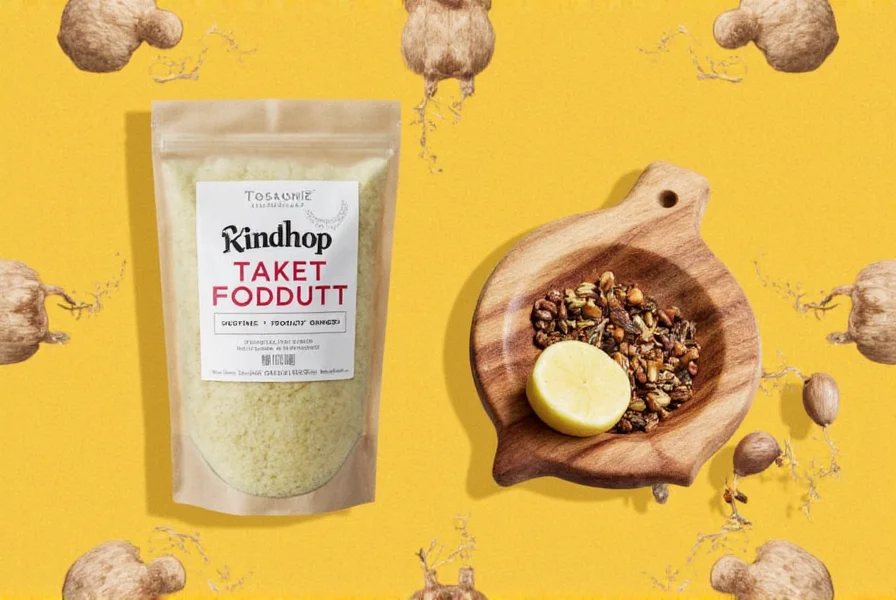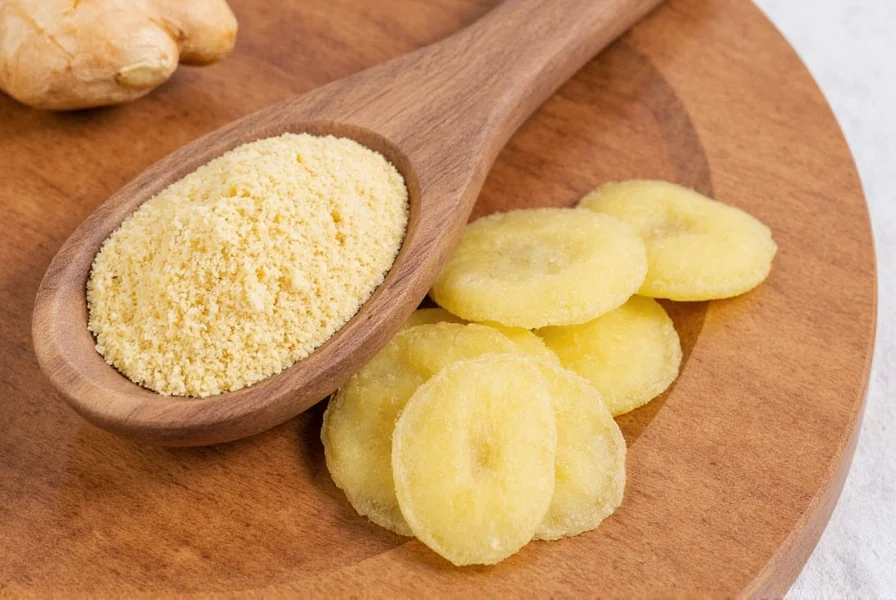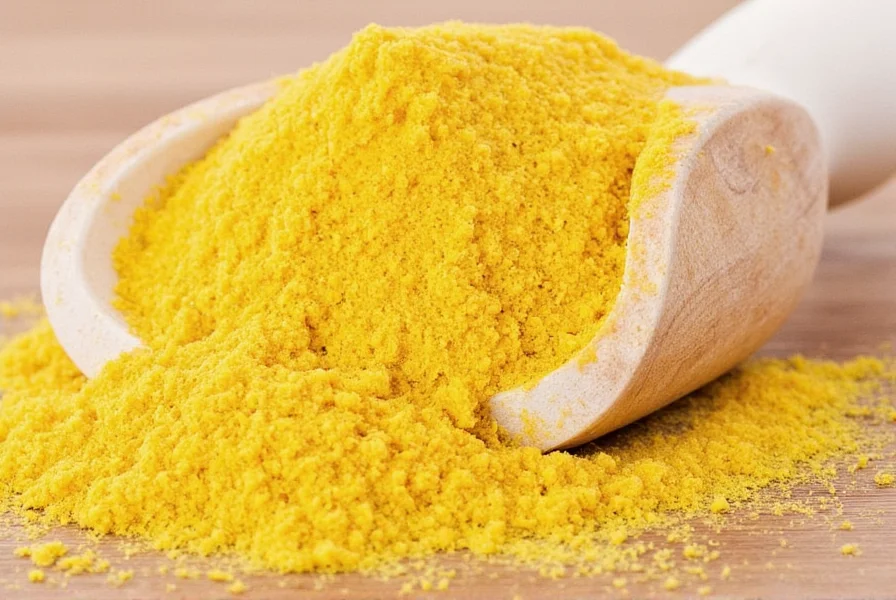When you're in the middle of cooking and realize you're out of ginger, knowing reliable alternatives can save your recipe. Whether you have an allergy, dislike ginger's pungency, or simply don't have it on hand, several spices can effectively replace ginger while maintaining your dish's integrity. This guide provides practical solutions based on culinary science and professional chef recommendations.
Why You Might Need a Ginger Substitute
Ginger's unique flavor profile—warm, slightly sweet, with peppery notes—makes it challenging to replace. Common reasons for seeking alternatives include:
- Running out of fresh or ground ginger mid-recipe
- Managing ginger allergies or sensitivities
- Adjusting flavors for personal preference
- Catering to dietary restrictions in group settings
- Creating dishes where ginger's intensity might overpower other ingredients
Top Ginger Substitutes Ranked by Culinary Application
1. Galangal: The Closest Flavor Match
Often called "Thai ginger," galangal shares ginger's rhizome structure but offers a sharper, more citrusy flavor with subtle pine notes. Use it when preparing Southeast Asian dishes.
Best for: Thai curries, Indonesian sambals, Vietnamese pho Substitution ratio: 1:1 fresh to fresh Pro tip: Slice thinly rather than grating, as galangal is fibrous

2. Allspice: The Baking Champion
This single spice mimics ginger's warmth while adding notes of cinnamon, nutmeg, and cloves. Its balanced profile makes it ideal for sweet applications where ginger's bite might be overwhelming.
Best for: Gingerbread, pumpkin pie, spice cakes, apple desserts Substitution ratio: 3/4 teaspoon allspice per 1 teaspoon ground ginger Pro tip: Combine with a pinch of black pepper to enhance warmth
3. Cardamom: The Sweet Recipe Specialist
With its floral citrus notes and subtle heat, cardamom works particularly well in recipes where ginger's sharpness might clash with delicate flavors.
Best for: Scandinavian pastries, Middle Eastern rice dishes, chai tea Substitution ratio: 1/2 teaspoon ground cardamom per 1 teaspoon ginger Pro tip: Use green cardamom pods for whole-spice applications
4. Cinnamon-Clove Blend: The Pantry Staple Solution
When you need a quick substitute using common pantry items, this combination replicates ginger's warmth without specialty ingredients.
Best for: General cooking, marinades, roasted vegetables Substitution ratio: 1/2 teaspoon cinnamon + 1/4 teaspoon cloves per 1 teaspoon ginger Pro tip: Add a pinch of black pepper to enhance the warming effect
5. Mace: The Delicate Alternative
Often overlooked, mace (the outer coating of nutmeg) provides subtle warmth without overwhelming other flavors—perfect for dishes where ginger might dominate.
Best for: Cream sauces, delicate fish preparations, custards Substitution ratio: 1/4 teaspoon mace per 1 teaspoon ginger Pro tip: Use freshly grated for maximum flavor impact
| Substitute | Best Recipe Types | Ratio (per 1 tsp ginger) | Flavor Notes |
|---|---|---|---|
| Galangal | Thai curries, pho | 1:1 fresh | Sharper, citrusy, pine notes |
| Allspice | Baking, desserts | 3/4 tsp | Warm, balanced spice blend |
| Cardamom | Sweet recipes, chai | 1/2 tsp | Floral, citrus, subtle heat |
| Cinnamon-Clove | General cooking | 1/2 tsp + 1/4 tsp | Warm, sweet, aromatic |
| Mace | Cream sauces, custards | 1/4 tsp | Delicate, warm, subtle |
Special Considerations for Different Cooking Methods
For Baking: Best ginger substitute for baking
Dry spice substitutes work better than fresh alternatives in baked goods. Allspice provides the most consistent results in gingerbread and spice cakes. For chewy cookies, try a 50/50 blend of cinnamon and cardamom to maintain texture while delivering similar warmth.
For Savory Dishes: Ginger replacement in recipes
In stir-fries and curries, galangal offers the closest flavor match. When unavailable, use a combination of 1/4 teaspoon turmeric (for color) plus 1/2 teaspoon mustard powder (for heat) per teaspoon of ginger. This creates a surprisingly similar flavor profile in Asian-inspired dishes.
For Beverages: Spice that tastes like ginger
When making ginger tea or cocktails, fresh lemon verbena or lemongrass can provide the bright, citrusy notes associated with ginger. Use one 4-inch lemongrass stalk per serving, bruised and steeped.
When Substitution Isn't Recommended
Certain recipes rely on ginger's unique chemical properties that substitutes can't replicate:
- Fermented foods: Ginger's enzymes aid fermentation in kimchi and ginger beer
- Medicinal preparations: Ginger's specific compounds for nausea relief
- Raw applications: Where ginger's fibrous texture is essential
Creating Your Own Ginger Substitute Blend
For the most versatile alternative, combine:
- 1 tablespoon ground cinnamon
- 2 teaspoons ground cloves
- 1 teaspoon ground nutmeg
- 1/2 teaspoon black pepper
Store in an airtight container for up to 3 months. Use 3/4 teaspoon of this blend per 1 teaspoon of ground ginger required. This mixture works particularly well as a ginger replacement in recipes requiring extended cooking times.

Final Considerations for Successful Substitution
When choosing what spice can I use instead of ginger, consider these factors:
- Recipe origin: Match substitutes to the dish's cultural background
- Cooking time: Longer cooking mutes strong flavors—use more potent substitutes
- Other spices present: Avoid overlapping flavors (e.g., don't use allspice in pumpkin pie spice recipes)
- Personal tolerance: Adjust ratios for sensitive palates
Frequently Asked Questions
Can I use turmeric as a ginger substitute?
Turmeric provides color but lacks ginger's flavor profile. For limited substitution, use 1/4 teaspoon turmeric plus 1/2 teaspoon mustard powder per teaspoon of ginger. This works best in cooked dishes where appearance matters more than exact flavor replication.
What's the best ginger substitute for someone with a ginger allergy?
For true ginger allergies, avoid galangal (related plant). Use a cinnamon-clove blend (1/2 tsp cinnamon + 1/4 tsp cloves per tsp ginger) or allspice for baking. Always check with an allergist before trying new substitutes if you have severe allergies.
How do I substitute dried ginger for fresh?
Use 1/4 teaspoon ground ginger for every tablespoon of fresh ginger. Since dried ginger is more concentrated, start with less and adjust to taste. Reconstitute by mixing with water for applications requiring texture.
Can I use ginger substitute in ginger beer?
Traditional ginger beer requires real ginger for its enzymatic properties. For non-alcoholic versions, try galangal or a combination of lemon zest and black pepper. For fermented versions, substitutes won't work as ginger's specific compounds are essential for the fermentation process.
Which substitute works best for ginger in curry?
Galangal is ideal for Thai and Indonesian curries. For Indian curries, use a blend of 1/2 teaspoon coriander plus 1/4 teaspoon cumin per teaspoon of ginger. This maintains the dish's authenticity while providing similar warming properties.











 浙公网安备
33010002000092号
浙公网安备
33010002000092号 浙B2-20120091-4
浙B2-20120091-4